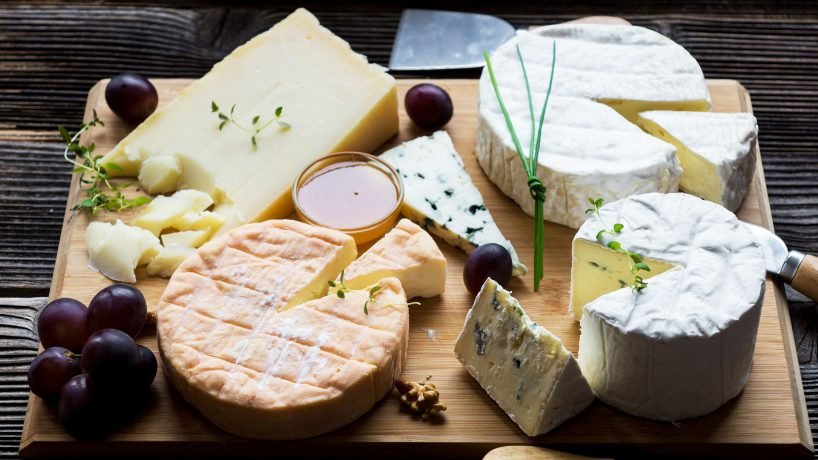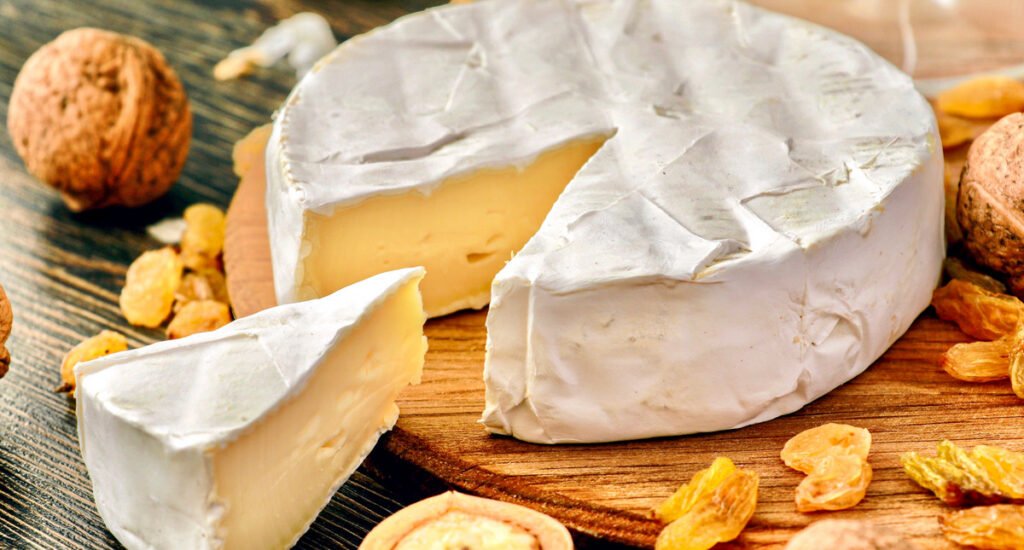France is a paradise for cheese lovers. French cheeses are unique products with a unique taste and aroma. It’s worth trying different varieties and discovering your favorites.

France is the undisputed home of cheese. The first cheeses were created in the 10th century in the north of the country. The method of their production was developed by monks. Cheese is served after a meal, most often as a dessert with wine. French cheeses come in a huge number of varieties and variants.
The well-known French cheeses include: Camembert, Bleu de Bresse, Brie de Meaux, Neufchatel, Saint, Münster, Roquefort. They are made from cow, goat or sheep milk.
Camembert

The original Camembert comes from France. The recipe comes from Normandy. It received its name in honor of the town inhabited by the farmer who developed its recipe. It is made from goat (or cow) milk. It has white mold and has a strong smell and taste. Delicate, fluffy crust and creamy interior with slightly liquid edges, each bite simply melts in your mouth. I
It is often added to appetizer salads. Camembert cheese is packed in a box made of birch bark.
Brie
The name comes from the historical region of Brie located in northern France. As a specialty dating back over a thousand years, the semi-soft blue cheese made from pasteurized cow’s milk is the most popular cheese in France. In the Middle Ages, it even became currency at some fairs.
Brie de Meaux
Tradition says that Brie de Meaux cheese was invented in the Middle Ages by the monks of the Rueil en Brie monastery. His great career began in 774, when the king of the Franks, Charlemagne, came to the abbey and became so fond of moldy dairy products that he requested its supply to his court.
The variety is the most famous of the Brie family. The cheese has a very mild taste, which makes it extremely appreciated. It has an intense smell, reminiscent of mushrooms. This species is produced in a French town called Meaux, where the name of the cheese comes from.
NEUFCHÂTEL
Neufchâtel is a traditional, soft white table cheese from the village of Neufchâtel-en-Bray in northern Normandy. Made from cow’s milk, it is one of the oldest cheeses in France, dating back to 1035. Cheese is produced in many forms, shapes and sizes – bonde (cylinders), coeur (heart-shaped), carre (square-shaped) and briquette (brick-shaped).
Legend has it that French farm girls fell in love with English soldiers during the Hundred Years’ War and began producing heart-shaped cheeses to show their love. The cheese is covered with a soft, fluffy, velvety crust.
It is aged for 8-10 weeks. Therefore, the original Neufchâtel is created only in the basements of the commune of Neufchâtel-en-Bray. Delicate, slightly sour taste.
Bleu de Bresse
Bleu de Bresse – this is a variety of French blue cheese, produced in the Alpine region from cow’s milk. It was created during World War II. The cheese is classified as cheese with overgrowth and mold growth. It has a thin and shiny skin and a flat cylinder shape. Cheese made from pasteurized cow’s milk, with blue veins, produced in Bresse.
Münster
Munster is a cheese from the Middle Ages. Initially, only the Benedictines, who founded numerous monasteries in Europe, were brewing it. The monks perfected the patent for making Münster, and the cheese had ideal conditions for ripening in humid cellars.
Cheese coming from France, more precisely from the north-eastern regions of Alsace and Lorraine. It is produced from cow’s milk and matured with the help of Brevibacterium linens bacteria and yeast. It is characterized by an intense smell, spicy, sharp taste and delicate consistency.

Camembert
In France, a cheese lover can satisfy absolutely all his culinary desires. Various varieties and a wide range of cheeses will help you choose something for every palate.
French cheeses can be a great gift brought from a trip to France.
